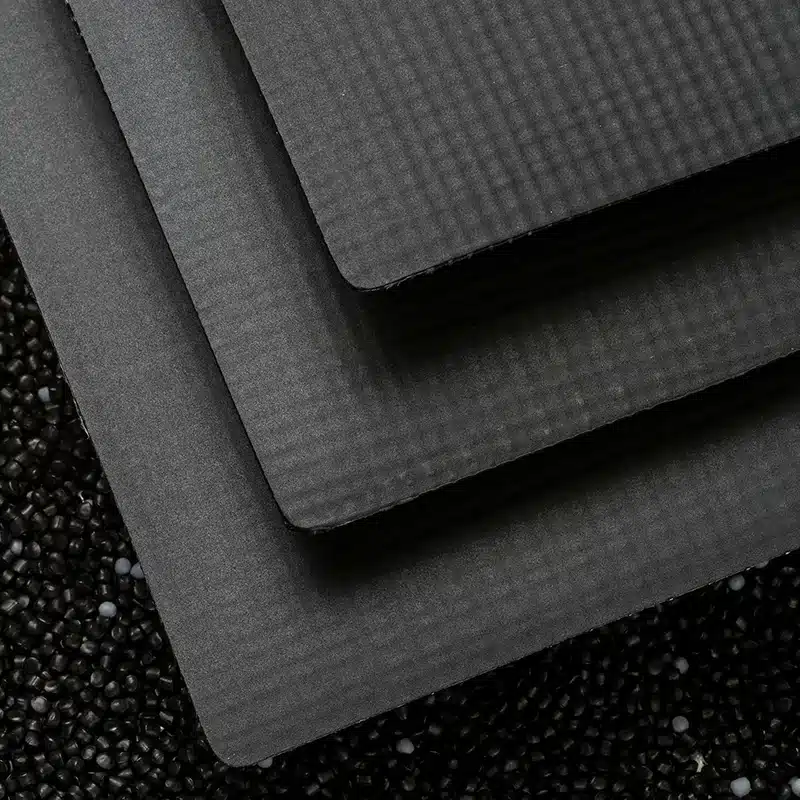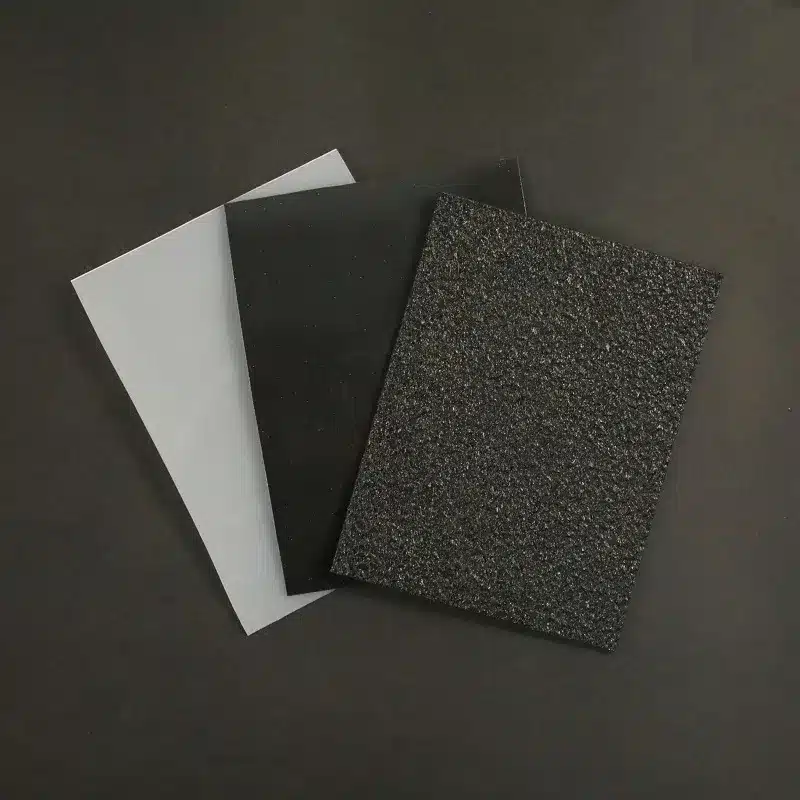+86-159 9860 6917
info@geofantex.com
geofantex@gmail.com
+86-400-8266163-44899
When constructing a pond, choosing the right materials is crucial for ensuring durability, water retention, and environmental safety. Geomembranes are widely recognized as one of the best pond materials due to their impermeability, flexibility, and long lifespan. In this article, we will explore the key aspects of geomembranes, focusing on their use in pond construction. We’ll answer common questions about the raw materials used, differences between geotextiles and geomembranes, the best materials for pond lining, and the distinctions between PVC and HDPE geomembranes.
What are the Raw Materials for Geomembranes?
Geomembranes are primarily made from synthetic polymers, each offering unique properties suitable for different applications. The most common raw materials include:
- High-density polyethylene (HDPE): Known for its high strength, chemical resistance, and durability. HDPE geomembranes are widely used in pond liners, landfill covers, and mining applications.
- Low-Density Polyethylene (LDPE): Offers greater flexibility than HDPE, making it easier to install in complex shapes and contours. However, it is less durable than HDPE.
- Polyvinyl Chloride (PVC): Made from polyvinyl chloride resin, plasticizers, fillers, and additives, PVC provides excellent flexibility and ease of installation. PVC geomembranes are often used in applications requiring high conformity to the underlying surface.
- Ethylene Propylene Diene Monomer (EPDM): Known for its elasticity and resistance to UV radiation, EPDM is commonly used in decorative ponds and water features.

What is the Difference Between Geotextile and Geomembrane?
While both geotextiles and geomembranes are used in civil engineering and environmental projects, they serve different purposes. Understanding that geomembrane is a plastic film and geotextile is a fiber cloth helps clarify their distinct roles and benefits in various projects:
- Geotextile: Geotextiles are permeable fabrics made from synthetic or natural fibers. They are used for filtration, separation, reinforcement, and drainage. Geotextiles allow water to pass through while preventing soil erosion and providing structural support.
- Geomembrane: Geomembranes are impermeable barriers made from synthetic materials such as HDPE, LDPE, or PVC. Their primary function is to prevent the migration of fluids and gases, making them ideal for applications requiring waterproofing and containment.
Which Materials Would Be Best Suited for Lining a Pond?
When selecting materials for lining a pond, several factors such as durability, flexibility, and environmental impact must be considered. The best-suited materials for pond lining include:
- HDPE Geomembrane: Offers excellent chemical resistance, UV resistance, and durability. It is ideal for large ponds and applications requiring long-term performance.
- PVC Geomembrane: Provides high flexibility and ease of installation, making it suitable for smaller or irregularly shaped ponds. It conforms well to the pond’s contours.
- EPDM Geomembrane: Known for its elasticity and resistance to UV radiation, EPDM is a great choice for decorative ponds and water features that require a natural look and feel.
Each material offers unique benefits, and the choice depends on the specific requirements of the pond project.
What is the Difference Between PVC and HDPE Geomembrane?
PVC and HDPE geomembranes are both popular choices for pond liners, but they have distinct characteristics:
- PVC Geomembrane: PVC geomembranes are known for their flexibility and ease of installation. They conform well to uneven surfaces and are ideal for applications requiring a high degree of flexibility. However, PVC can be less durable over time, especially when exposed to harsh environmental conditions.
- HDPE Geomembrane: HDPE geomembranes offer superior durability, chemical, and UV resistance. They are more rigid than PVC, making them suitable for larger projects and applications where long-term performance is critical. HDPE is also environmentally friendly, as it can be recycled.
Choosing between PVC and HDPE depends on the specific needs of the pond, including size, shape, and environmental exposure.
Geomembranes are essential materials for constructing durable and effective pond liners. Understanding the raw materials used in geomembranes, the differences between geotextiles and geomembranes, and the specific properties of PVC and HDPE can help in selecting the best pond materials. Whether you need a flexible liner for a small decorative pond or a robust solution for a large water containment project, geomembranes offer reliable and efficient options to meet your needs.



Get Free Sample
We’ll respond as soon as possible(within 12 hours)






















